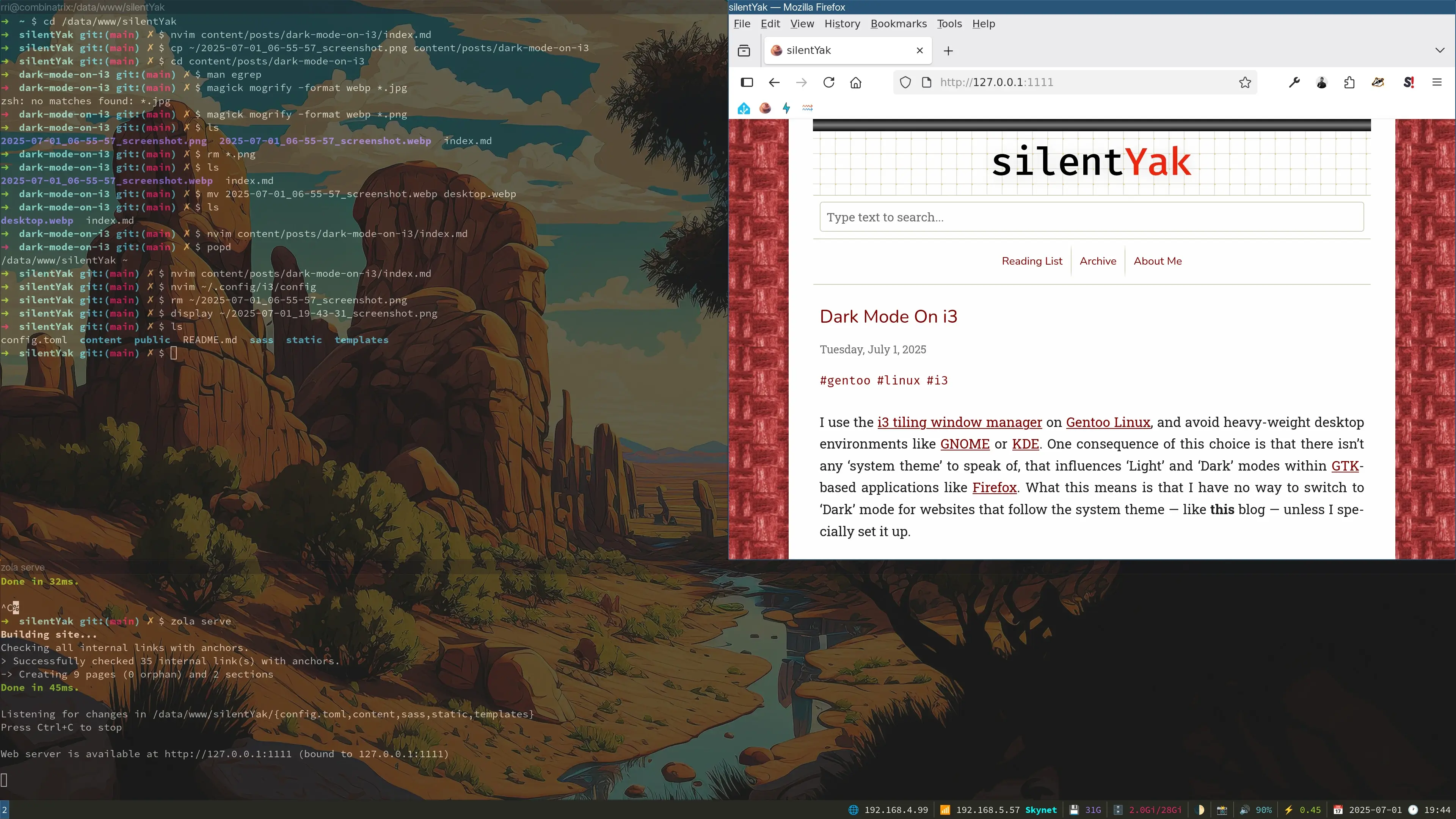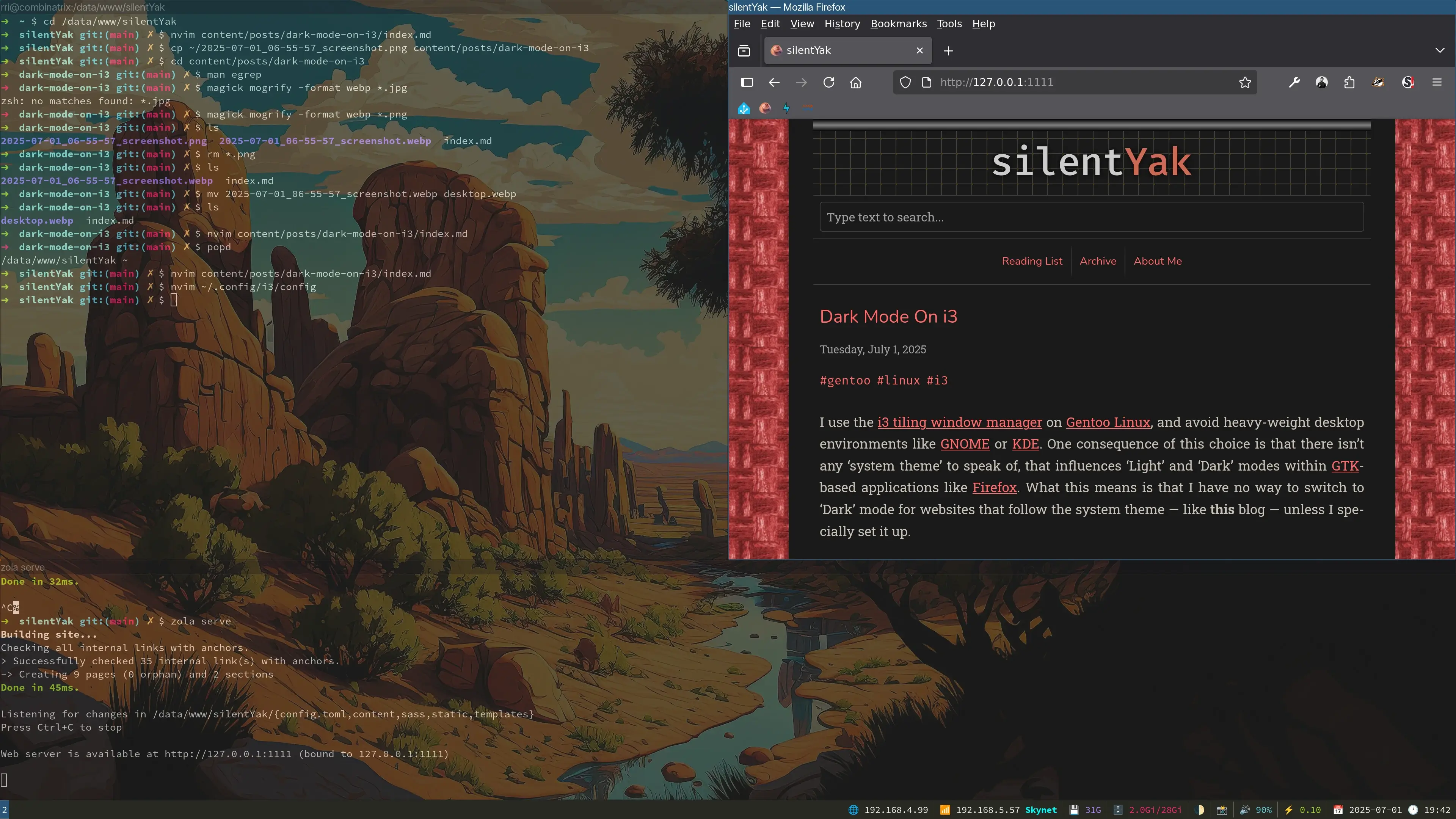I use the i3 tiling window manager on Gentoo Linux, and avoid heavy-weight desktop environments like GNOME or KDE. One consequence of this choice is that there isn’t any ‘system theme’ to speak of, that influences ‘Light’ and ‘Dark’ modes within GTK-based applications like Firefox. What this means is that I have no way to switch to ‘Dark’ mode for websites that follow the system theme — like this blog — unless I specially set it up.
My solution for this is fairly straightforward: add a button on my desktop that allows me to switch between light and dark modes. When I click the button, it invokes a script that toggles modes. You can see the button — the one with the 🌓 icon — in the screenshots of my desktop below, right at the bottom of the screen.
Light Mode

Dark Mode

Details
The toolbar at the bottom is rendered by i3blocks, with the following configuration block:
[switch-theme]
full_text=🌓
command=/data/bin/switch-theme
The switch-theme script that the command above invokes is quite simple:
#!/bin/bash
#
# Script to toggle GTK light & dark modes.
#
# The mode is toggled by using the `xsettingsd` daemon,
# which should already be running. The `.xsettingsd`
# configuration file is updated, with exactly one of the
# following sets of values:
#
# Net/ThemeName "Adwaita" # Light
# Net/IconThemeName "Tela" # Light
#
# OR
#
# Net/ThemeName "Adwaita-dark" # Dark
# Net/IconThemeName "Tela-dark" # Dark
#
# Note that these themes must already be installed. The
# script sends a HUP signal to the process, causing the
# setting to take effect at once.
#
# Also note that there's a fun bug in this script that
# I didn't bother to fix, which is: it toggles the keys
# for Net/ThemeName and Net/IconThemeName separately, so
# they will not stay in sync if they didn't start out in
# sync!
CFG_PATH="/.xsettingsd"
For the script above to work, you must first install the gnome-themes-standard and xsettingsd packages on Gentoo, or their equivalents on other Linux distributions. You also need to have the xsettingsd process running, which I’ve added to my .xinitrc startup script.
